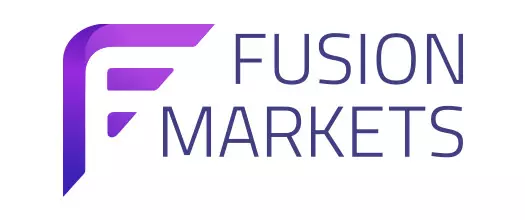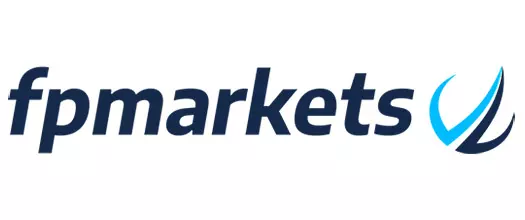- Jump to:
- Main features of the best 1:500 Leverage Forex brokers
- What Is Financial Leverage
- How Does It Works
- Margin
- Leverage and Expected Returns
- Is 1:500 Suitable for You
- Advantages
- Risks
One of the most attractive yet high-risk features of forex trading is leverage. Since it allows traders to open positions that exceed their deposit balances, leverage can quickly amass massive returns. Depending on regulatory restrictions, forex brokers may impose limits on the leverage ratio, minimizing the risk of bigger losses. However, jurisdictions like the Seychelles, Vanuatu, and others may often allow traders to use leverage of up to 1:500.
If you are willing to take the risk of trading with higher leverage, we can help you discover several reputable brokers offering leverage of up to 1:500. Have a look at our table below, revealing some of the top forex brokers that allow the use of higher leverage ratios.
 Fusion Markets74-89% of retail's CFD accounts lose money
Fusion Markets74-89% of retail's CFD accounts lose money FP Markets73.85% of retail investor accounts lose money
FP Markets73.85% of retail investor accounts lose money Global Prime74-89% of retail CFD accounts lose money
Global Prime74-89% of retail CFD accounts lose money Pepperstone75.5% of retail investor accounts lose money
Pepperstone75.5% of retail investor accounts lose money AxiThe vast majority of retail client accounts lose money
AxiThe vast majority of retail client accounts lose money XM Group72.82% of retail investor accounts lose money
XM Group72.82% of retail investor accounts lose money
In this review, you can find a comparison table of forex brokers that offer 1:500 leverage. We rank them based on several factors including: regulation, spreads and commissions, Trustpilot rating, trading instruments, trading platforms, deposit and withdrawal methods.
Our team has thoroughly evaluated all brokers listed below using TradingPedia’s exclusive methodology.
Main features of the best 1:500 Leverage Forex brokers
- Brand
- Trading platforms
- Minimum deposit
- Regulations
- Trading instruments
- Spreads
- Leverage for Forex CFDs
- Leverage for Crypto CFDs
- Leverage for Indices CFDs
- Deposit methods
- Withdrawal Methods
- Commission per Lot
- Contact details
If you want to be a successful online trader, then you have to understand the global markets and know the basics of trading. One of the first things every beginner needs to learn about is leverage – what this is and how it can be used to maximize profits. Furthermore, different Forex brokers may offer leverage ranging from 1:5 all the way up to 1:1,000 and traders need to decide which ratio is suitable for their trades.
Leverage is an extremely important part of every successful trading strategy. In Forex, investors apply it to increase the potential profits from fluctuations in exchange rates between any two currencies. It represents something like a loan, a line of credit brokers extend to their clients for trading on the foreign exchange market. If brokers offer 1:500 leverage, this means that for every $1 of their capital, traders receive $500 to trade with.
What Is Financial Leverage?
Before looking into leveraged trading products such as CFDs or Forex pairs, we need a better understanding of how leverage works and how it is applied. There are various forms of leverage that could arise in different situations but in general, it is the use of borrowed funds (rather than solely one’s own money) for the purchase of an asset. The idea is that the future profits of this investment will be much higher than the borrowing cost.
Financial leverage could be used by firms, banks, and individuals and although the specifics may differ significantly, the basics are pretty much the same. Investment funds, for instance, may leverage their assets by funding a portion of their portfolios with fresh capital resulting from the sale of other assets. Businesses may also leverage their investments by borrowing funds so they can use less equity (their own capital). Another example is purchasing a home and financing a portion of the price with mortgage debt.
Let’s assume for instance that we buy a property for $100,000 with the intention to sell it for double the purchase price. We use 50% equity and 50% debt and within a few months, we manage to sell our asset for $200,000. We will repay the bank only the nominal value of the debt plus some interest, of course, which will leave us with around $150,000 (before the borrowing costs). This means that we have managed to leverage our initial capital and have increased our wealth by 200%.
How Does Leverage Work in Forex?
Once we have described the basic concept of using leverage, we should be able to apply it in currency trading, as well. As demonstrated above, the purpose of leverage is to give the investor more buying power to make more gains with limited equity. The same applies to Forex trading, as well. Brokers offer their clients leverage so that they can generate higher profits with only a portion of the transaction value.
But how exactly does leverage work in Forex trading? It is shown as multiple of the trader’s equity – it could be 10, 50, or 200 times the client’s own funds. Most brokers display it as the ratio of the trader’s money to the funds borrowed from the firm or vice versa – 500:1 or 1:500. These two refer to the same thing – the broker allows the trader to open a position worth 500 times his capital. If we deposit $1,000, for instance, and use 1:500 leverage, we will be able to trade volumes at a value of $500,000.
However, there are several additional things Forex traders should be aware of when using leverage. One of them is the margin requirement set by the broker.
Margin
In order to provide leverage to their clients, Forex brokers require a certain amount of funds to be deposited in the trading account as collateral to cover the risk associated with taking leverage. This deposit is called margin and leveraged trading is sometimes referred to as trading on margin. Each broker has a different margin requirement, based on the type of account (standard, mini, professional, etc.), the funds deposited by the trader, and the type of financial instrument that will be traded.
The initial margin requirement is usually displayed as a percentage of the total transaction value and it could be 0.5%, 1%, 2%, etc. There are various formulas for margin and leverage that could clearly show how these two fundamental concepts are linked. For instance, we can calculate the margin by dividing the value of the transaction by the leverage. If we use the same example from above and have $1,000 as balance in our account, the broker offers us quite high leverage of 1:500 (or 500:1 more precisely).
We want to buy 1 standard lot of the EUR/USD pair on a USD-denominated account. To get the margin for this specific position, we need the value of the transaction, which is €100,000, and the leverage, which is 500 (500:1). When we divide €100,000 by 500, we get €200, which is 0.2% of the transaction value. This means that while our position is open, our balance may remain $1,000 but our equity will be less – €200×1.10 (the EUR/USD exchange rate)= $219,52. This is the margin that needs to remain “locked” as collateral so our equity will be $780.48.
Leverage and Expected Returns
The main characteristic of leverage in Forex trading is that it amplifies the expected profit or loss from each trade. This means that traders can earn a lot more from a successful transaction with leverage than they would if they invested only their own equity. If we take the 1:500 level, each $1 profit from regular, non-leveraged trading would translate to $500. To better illustrate the effect of leverage on the expected returns, let’s use the same example from above.
We are holding a long position on 1 standard EUR/USD lot (€100,000), which we have purchased at a rate of $1.10. Usually, the price for this major currency pair does not move by more than 100 pips per day (1 pip is one-hundredth of one percent or in this case, the fourth decimal place in the bid-ask price). Let’s say the Euro increases in value relative to the US dollar and the movement is only 45 pips. This means that when we sell and close the position, €1 will be equal to $1.1045.
This does not sound like a lot – it is a movement of only a fraction of a cent. However, our profit will be €100,000 x (1.1045 – 1.10) or $450. Note that we have kept this position open only for a few hours and the price movement was very slight. With a minimum required margin of only $219,52, we have made a profit of $450. In other words, we have doubled our equity.
Is 1:500 Suitable for You?
When determining what leverage to use, traders should take several important things into consideration. First of all, they should keep in mind that 1:500 or 500:1 is an extremely high level of leverage in trading and it is not allowed in many jurisdictions due to the high risk for losing one’s capital. This includes major Forex markets such as the US, Japan, and the European Union where brokers are required to restrict the leverage offered to retail clients. In the EU, for instance, traders can get maximum leverage of 1:30 for major currency pairs.
The high risk of excessive leverage also means that traders should be skilled and have sufficient experience in the foreign exchange market before taking 1:500 leverage. Another thing they should consider is the strategy they are about to apply and their overall trading style. More importantly, it is essential to determine all conditions of the trade before opening a position and this involves its duration. Usually, traders who open and close positions within a few hours would prefer using higher leverage – 1:100 and higher.
This way they can squeeze the highest possible profits out of short-term transactions. Such high leverage – around 1:500, is particularly popular among so-called scalpers. Scalping is quite an interesting strategy in Forex trading where positions are kept open only for a few minutes or even seconds.
Advantages of 1:500 Leverage
Until a few years ago, the Forex market became extremely popular among retail traders and one of the reasons for this was the opportunity to get high leverage and make the most of your limited capital. Nowadays, you would not find many brokers offering 1:500 leverage due to regulatory changes aiming at creating a more secure and sustainable trading environment. Although such high levels of leverage may seem too extreme to some traders, they do provide us with the chance to increase our potential profits by multiple times – by 500 times compared to any profits we could generate without leverage, to be precise.
Of course, traders should know that although leverage works as borrowed capital, i.e. as a line of credit as some would say, it has no additional cost. Traders do not have to pay interest on the leverage they get. There is no need to repay any debt or pay for anything else – the only cost for the transaction will be clearly displayed by the broker beforehand.
Last, but not least, traders should understand that in most cases, leveraged trading is the only way for them to access the foreign exchange market. Typically, transaction volumes here are within the six and seven-figure rate and only a handful of retail traders could afford to open trades with their own equity. When using leverage, however, everyone can trade against leading banks, hedge funds, and other institutional traders.
Risks of Using 1:500 Leverage
Leveraged trading is always linked with great opportunities for profits and high risks. While leverage is used with the purpose to magnify the profit from a trade, it may also enhance the negative outcomes from unsuccessful trading – i.e. the financial losses. This is one of the most underestimated dangers to beginner traders – they would get 1:500 leverage tempted by the attractive promise for huge profits but without a solid, reliable strategy and good knowledge of the market, they risk losing all their capital within days or even hours.
To avoid losses, they should first learn how to apply leverage and determine how much leverage would be suitable to them. In addition, they should apply different risk management techniques and tools – many of these are readily available once you open a retail client account with an online Forex broker. Great risk and management tools are stop losses, for example, but to be effective, they need to be placed correctly by the trader.










